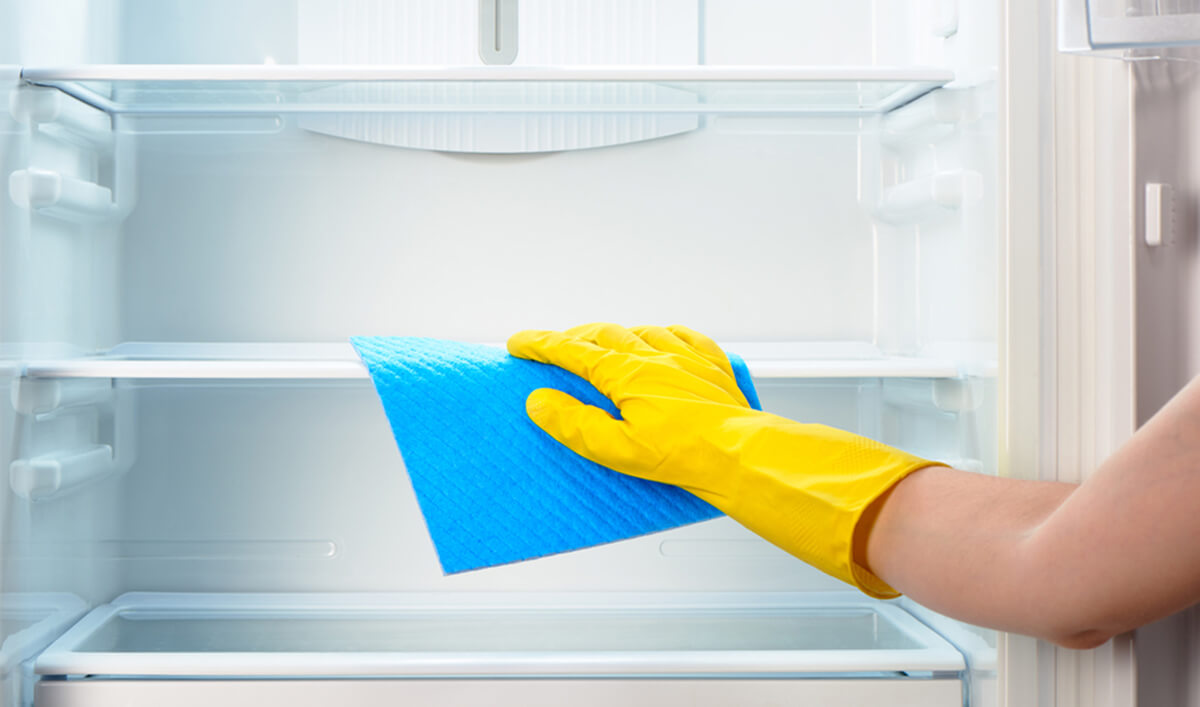
We tend to forget about cleaning the fridge a lot of the time. But as the spring cleaning season approaches, it may be time to give that gunk underneath some of your expired condiments a second look. For health and safety reasons, it’s best to keep a clean refrigerator. It helps to prevent mold and promote the appliance’s efficiency. Also, a fresh-smelling fridge is just so much more calming than a stale- or moldy-smelling one! Here are some tips for cleaning your refrigerator with natural ingredients safely.
- Remove everything. Completely empty out your refrigerator. Put items in a cooler with ice to make sure your food stays safely cold. As you take stuff out, wipe containers down with a rag and soapy water. If a container has cracked or is sticky, make sure you don’t put the item back like that.
- Throw out expired items. As you take stuff out, check the expiration and “best by” dates and eyeball your produce. If you see anything with mold on it (it’s OK, it happens to the best of us), you’re going to want to take extra care during the next steps.
- Unplug your fridge. If it’s an option and if you need to take your time with a deep cleaning, unplug the fridge to save energy. This isn’t necessary if you can’t get to your plug (but you should know that there may be some scary stuff behind your fridge). If you can’t reach, simply turn your fridge up to its highest temperature setting.
- Take out what you can. In many fridges, trays and compartments can be completely removed. Take them out, and if you can, throw them in the dishwasher. If not, let them soak in hot water and ordinary, natural dish-washing liquid in your sink. You can also let them sit in baking soda and water.
- Destroy mold and mildew. If you see mold on any of these appliances, from the shelves you took out to the inside of the fridge, you’ll want to use distilled white vinegar to kill it. White vinegar is an alternative to the super-powered super-chemical: bleach. It kills about 80% of molds out there, but if you’re nervous, go for the bleach. Another, more natural alternative is old-fashioned Borax, which can be mixed with water and then left on without being wiped away to prevent future growth. Tea tree oil smells great and can do the trick, too.
- Freshen the inside with a wipe-down. There are a few choices of substance you can use to wipe down your fridge with. Mix two cups of hot water and two tablespoons of the magical substance many of those in the cleaning business use: baking soda. Or use that handy mixture of vinegar and water. Or, instead, combine lemon juice, salt, and water for a nice-smelling cleaning solution.
- Get the gunk out. Creating a thicker paste of baking soda and water and then allowing it to set for a bit will help to get out the “goop.” I like to attack it with a putty knife.
- Wipe down the gaskets. The edges of the doors of your fridge can get really nasty, especially if you have pets. Clean the edges with warm water, vinegar, and a rag.
- Suck up crumbs. Use the vacuum cleaner to suck up any coffee grounds or nasty crumbs at the bottom of and around your fridge.
- Clean the outside. To clean a stainless steel refrigerator, combine a few drops of natural dish-washing liquid and warm water. Spray and wipe away the fingerprints. A solution of white vinegar and water also can work well.
- Deodorize to the max. For extreme leftover smells, combine coffee grounds and baking soda in a bowl and leave it in the fridge for a while. It will smell great afterward.
- Examine the dark side. Oh, no… the horror! The awful part about cleaning fridges, in my opinion, is the too-often-ignored backside of it, where the coils are. Make sure that the fridge is unplugged, and then take a vacuum cleaner to it.
- Put clean, covered food back. Make sure you’re storing your food in wiped-down containers that won’t crack, drip, or rot, like glass or plastic.
![]() best cleaning company website forever!
best cleaning company website forever!![]() working hours : Mon-sat 9.00AM - 6.00PM
working hours : Mon-sat 9.00AM - 6.00PM![]() best cleaning company website forever!
best cleaning company website forever!![]() working hours : Mon-sat 9.00AM - 6.00PM
working hours : Mon-sat 9.00AM - 6.00PM